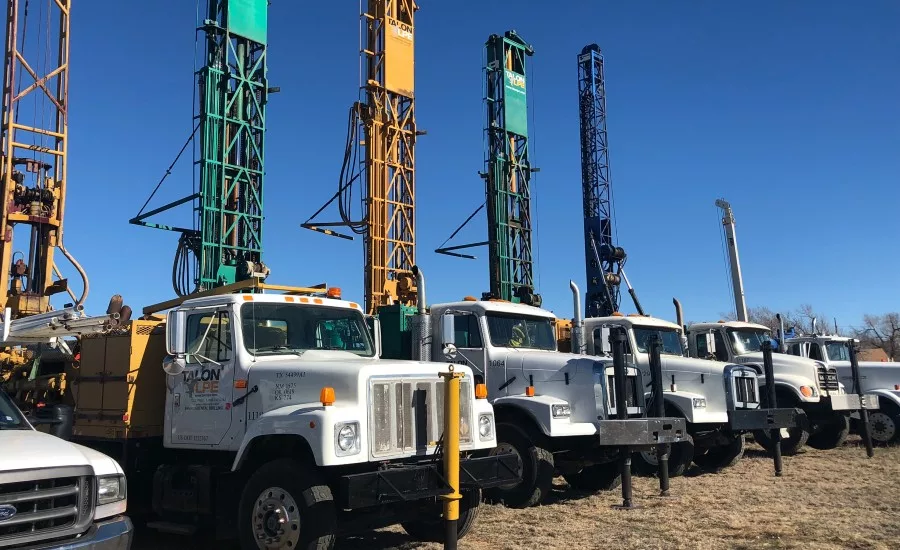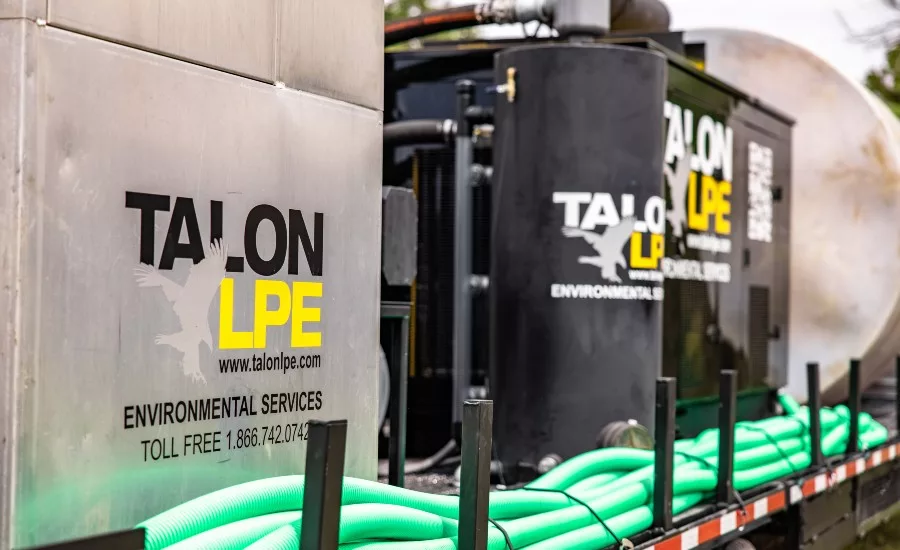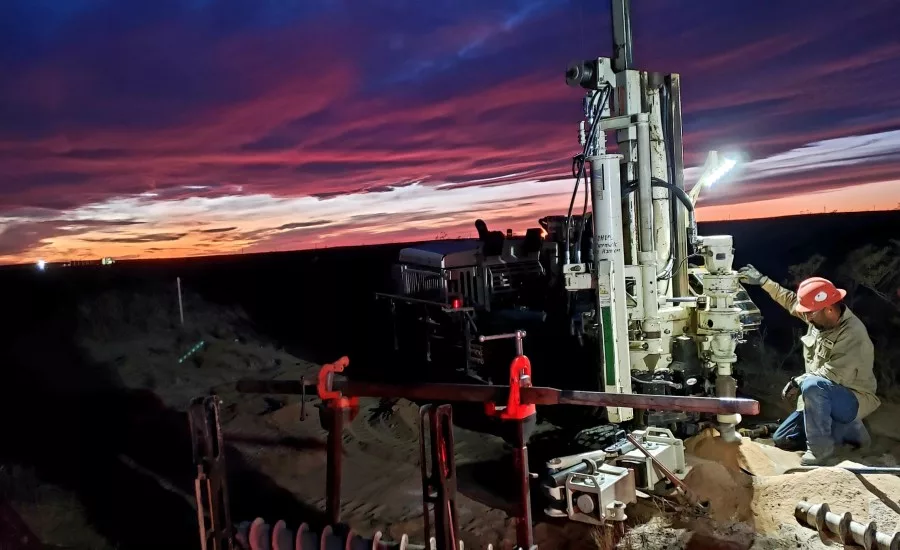Texas Environmental Drilling Firm Makes a Bid for the Long Term
Rob Meyer of Talon/LPE Talks Training, Recruiting, Remediation

Texas-based Talon/LPE offers a range of environmental services using mud and air rotary, direct-push and other drilling techniques. Source: Talon/LPE

Rob Meyer, vice president of drilling operations for Talon/LPE, says the company’s most utilized drilling method is air rotary, though they have added sonic to expand their range of bids. Air rotary performs well in west Texas and eastern New Mexico lithologies the company works in.
Source: Talon/LPE

Rob Meyer says it’s important to take a step back after each project and reflect on what went right and what didn’t go as planned.
Source: Talon/LPE
From bidding to execution to administration, Rob Meyer says every drilling project has lessons for the companies executing them.
“There’s something to be learned on every project,” says Meyer, vice president of drilling operations for Texas-based Talon/LPE. He oversees drilling and in-situ remediation projects for the company, which offers a range of environmental services deploying mud and air rotary, direct-push and other techniques.
“I’ve certainly bid on some projects that have put us in a tough position, but the way I look at it is every problem is a learning opportunity. If we’re not taking steps forward, we’re just going to get passed by someone else.”
We had Meyer on our Drilling In-Site video and podcast series to discuss environmental drilling, remediation, sonic, driller cross-training and other topics. This is an edited summary of our talk. Click here to see the full video, or here to listen to the podcast.
Q. Talon has a wide range of drilling equipment, including mud rotary, direct-push and sonic. What method is used most?
A. The most utilized drilling method we have is air rotary. In west Texas and eastern New Mexico, the lithologies are such that if we are to facilitate efficient installation of groundwater monitoring wells, air rotary is typically the most efficient from a footage perspective to get wells in the ground. There are more regional applications of hollow-stem auger, direct-push and mud rotary, as well as depth limitations associated with air rotary as our equipment is set up, and other lithological challenges where we employ different methods, but air rotary is the predominant drilling method.
Q. Do you have specific drillers for each method or do they cross-train so they can run different drills?
A. So we have a couple of drillers who are more specialized in specific methods but, generally speaking, most of our drillers are capable at operating any of the drilling methods with the exception of sonic. We only have two drillers right now that are trained on the sonic rig, in that technology, just because it’s new to us. It’s only been a couple of months and that’s a learning curve. But, generally speaking, any, one of our drillers can go out and operate any one of our drilling rigs. … We don’t like to have everyone be a jack-of-all-trades, but to be able to employ different methods when needed.
Q. Talon recently added sonic to its services. How has that affected project opportunities?
A. It’s interesting because a lot of our clients are not familiar with sonic. [It’s] unfamiliarity ranging from, “What is sonic drilling? I’ve never heard of it” to, “Oh yeah, sonic’s just really expensive. I don’t want to hear about it.” There are also those clients that are very familiar with it and have been very excited to hear that we have brought it to Talon.
As far as opportunities go, I think that it’s a mixed bag. Some of our current clients say, “Well, I recognize the value that sonic brings even at a potentially increased cost, but the value is there. And I think it is the right thing to do for this particular site because we have some data gaps.” Everything’s been drilled air rotary and the lithologic logs aren’t great. We have the instances where particular clients have adopted sonic drilling because there are a host of challenges at those facilities and they have just decided that the easiest way to deal with all those challenges is sonic drilling — even though it’s not as fast and it’s a little bit more expensive on some things. There are a lot more things that you can control. There are a lot of aspects of sonic drilling that, in my opinion, are a lot safer than other drilling methods.
The important thing that I bring up to all of our clients is you have to look at lifecycle cost. You can’t just look at cost right now. … Let’s say you’ve got 30,000 feet of drilling and your options really, from a lithological perspective, are sonic and mud rotary. How much waste are you going to generate, mud rotary versus sonic? How much sloughing are you going to have, or cuttings expansion are you going to have with mud rotary versus sonic? What is the impact going to be when you go to dispose of a) the additional cuttings, and b) the mud that can’t pass paint filter tests and has to be solidified either on-site or at a waste facility? In addition to that, site prep, site restoration, those types of costs. Because sonic is surgical, you can be a lot cleaner and a lot quicker to set up with a sonic rig than you can be with mud rotary. When you’re done you don’t have this shaker full of drilling mud and splashes of silty muck everywhere, then a bunch of tooling that just has to be cleaned, and all that stuff has to be dealt with.
So there are advantages [to sonic] with environmental, especially if you have a formation that air rotary drilling is just not going to be effective, and so your options really are limited to mud or sonic. It’s allowing us to, rather than force the method because it’s the best method that we’ve got, to say, “Well, this isn’t working. We need to stop and come back with the right drill rig. There’s trade-offs. It’s not just that it’s more expensive. There’s a larger conversation.
Q. You’ve done a lot of work in operations and project management over your career. Systems can sometimes be a challenge for contractors. Can you gives us a few tips for staying organized and on top of what goes on in the field?
A. A lot of the time we get entrenched on, “I need this answer by today. I need this answer by tomorrow. This problem needs to be resolved by the end of the week.” It’s easy for us to get caught up in, “Well, my client needs it by the end of the week. I need to get it handled.” Sometimes the answer is just not going to come by the end of the week regardless of whether you spend 60 hours working on trying or not. I think part of it is the easiest way to do it is to just communicate. Have an honest conversation. Have an honest conversation with your boss. I’ve had to have some honest conversations and I say, “You know what? This week just isn’t going well. Our numbers this month just aren’t going to be where I hoped they would be.” Having that communication upfront as opposed to, “Why are we now a week and a half behind, and you have yet to call me? Why have we not had a conversation sooner? Why, why am I finding out that our numbers aren’t going to be good until months later?” I think really just communication.
And I have this notebook that I am lost without. I left it at the office and my stress level went through the roof for no other reason than I didn’t have it. There wasn’t anything that I needed out of it, but I knew at any moment, I could get a phone call and I would need to flip back a couple of pages and look at my notes. … At the end of the day, we have a cell phone, we have a computer, we have email, we have LinkedIn, we have Facebook, we have Instagram, we have whatever — all of these means of communication. But, at the end of the day, what goes in here is what I need to do and what I need to remember. Right now I’ve got 59 unread emails. I’ll get to it when I have time, but right now what’s most important is resolving the issues that I currently have, not opening Pandora’s Box for another 42 issues or 59 issues. What’s most important is keeping the client that I’ve already got engaged on a problem, keeping that client happy, before I open another problem to resolve.
There’s no silver bullet. Everybody’s different. I used to be more able to juggle plates than I am now. Now, what I’ve learned the hard way is that juggling plates works really well until you start dropping them, and then all of a sudden you’ve dropped 10 or 15 all at once. It’s just not the right way to go about it, and it doesn’t benefit anybody to do that.
As far as systems go, the drilling industry is full of really skilled and talented people that know how to drill and they know how a project should go, but they don’t do a great job of fully understanding that project. Our industry would benefit so much from people trying to take a step back and say, “What did that actually cost to do?” My general feeling is, do whatever is right for the client in the moment, but if you’re not doing an after-action to say, “Okay, we did everything right for the client. We got it done, but did we even make any money doing it? Are we bidding accurately to be able to actually maintain our business for the next 15-20 years.” You know, everything that we do at Talon is for our clients, whether they’re internal clients and their clients, or external consulting clients and their clients. Our focus is always on our clients and doing the right thing — ethically, morally, legally — for the client. But you’ve got to have some time to take a step back and say, “What did we do right? What did we do wrong?” That’s not just operationally, but financially and administratively — all of those things. I don’t know that I have the perfect answer, but taking a step back and making time to reflect his critical.
The Full Interview
We interviewed Rob Meyer for episode 32 of our Drilling In-Site series. In addition to these questions, our talk covered strategies for recruiting drilling talent, his “over beers” drilling story and other topics. See the full conversation at www.thedriller.com/insite, or listen to the podcast version at www.thedriller.com/insite-podcast. Episodes also in Apple’s Podcast store. Search Drilling In-Site and tap Subscribe.
Working on an interesting project or have industry wisdom to share? Email verduscoj@bnpmedia.com to be considered for a guest spot on Drilling In-Site.
Looking for a reprint of this article?
From high-res PDFs to custom plaques, order your copy today!



